Header: Courtesy of Cheng-Wei Lee
Structural efficiency plays a crucial role in modern construction, from high-rise buildings to lightweight bridges. That’s why the Bartlett School of Architecture is investigating how generative design and topology optimization can enhance the strength and material efficiency of load-bearing elements. Conducted within Research Cluster 8, under the guidance of Kostas Grigoriadis and Alvaro Lopez, Cheng-Wei Lee‘s study examines stress flow and porosity in columns and slabs to optimize material distribution and improve structural performance.
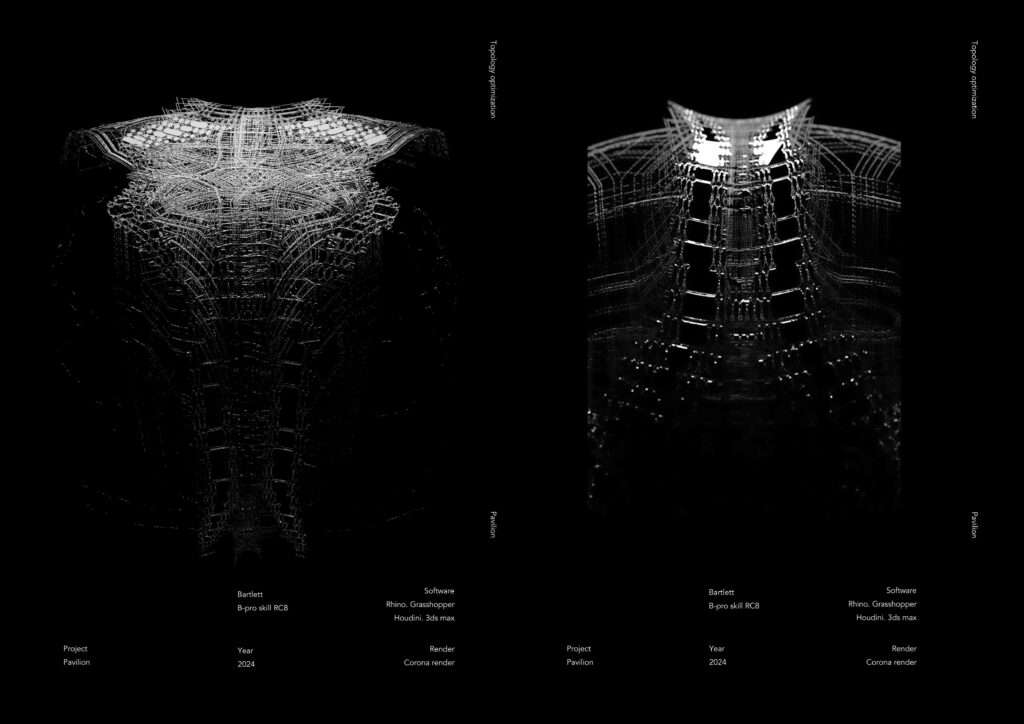
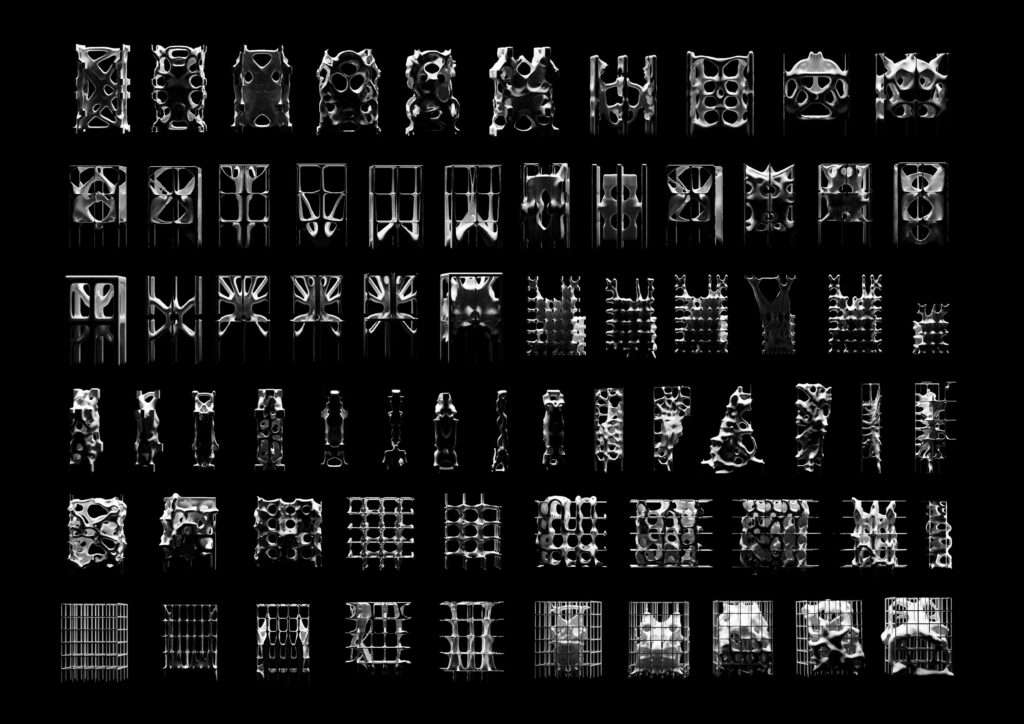
Structural performance
The project examines the integration of generative design and topology optimization to enhance the structural and material efficiency of load-bearing elements such as columns and slabs under various conditions. By analyzing stress flow and porosity, the study aims to improve material distribution and structural performance, contributing to a more resource-efficient approach to construction.
To evaluate structural efficiency, a topology optimization process that simulates strain levels across the structure and dynamically adjusts the density and orientation of its components was applied to a column element, ensuring material is allocated only where necessary. A distributed load was applied over an anticlastic shell, with fixed supports assumed at two edges resting on the ground. The structural elements were arranged according to principal stress lines, with thickness and topology dynamically adjusting in response to the applied stress.
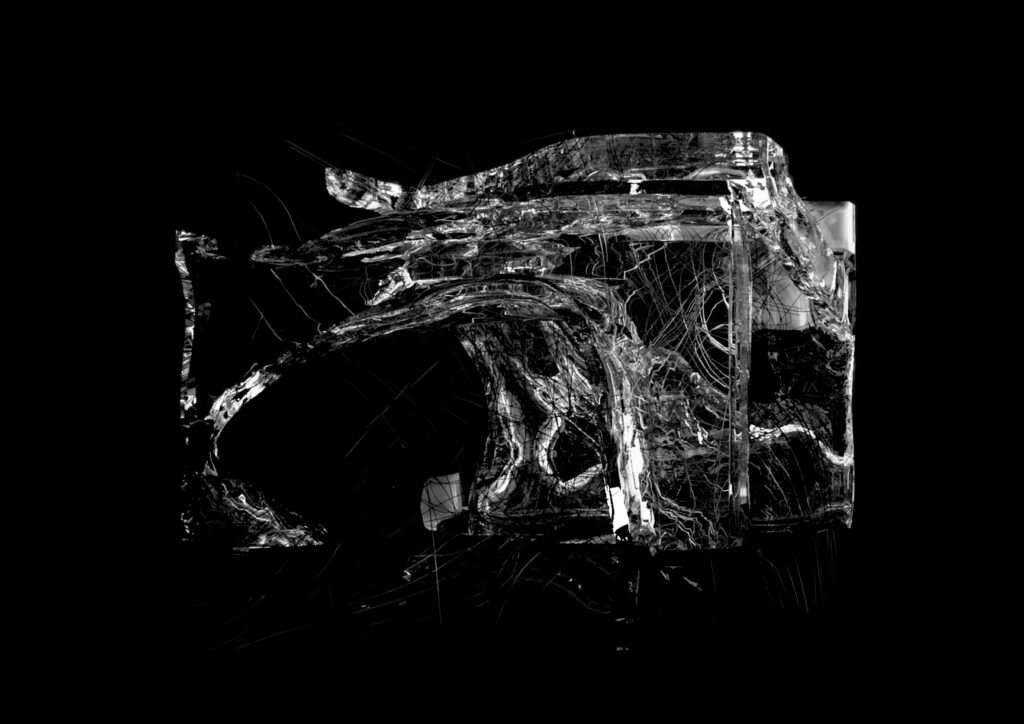
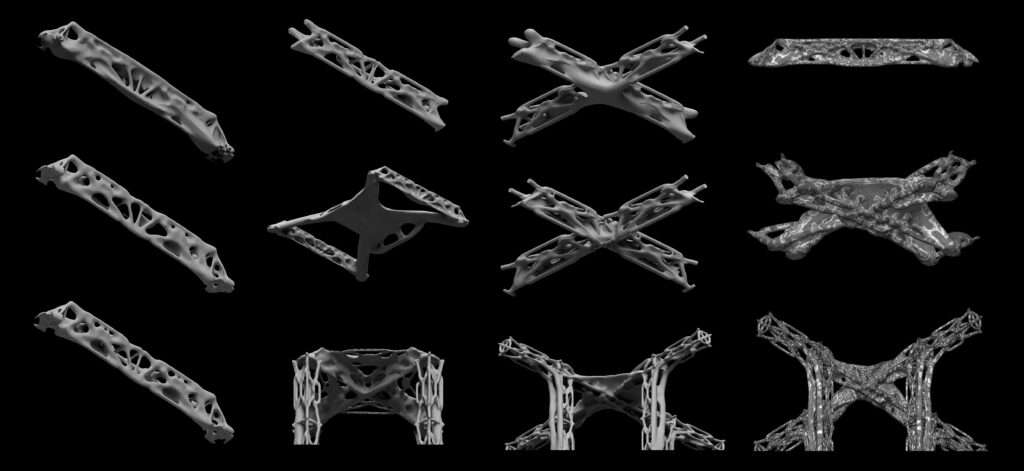
Topological stress evaluation
Stress analysis was conducted to refine the design further, integrating stress line evaluations as the foundation for the base structure. The optimized geometry was achieved through topological optimization experiments, balancing scalability and precision while ensuring structural integrity. The approach involved testing various design iterations of columns and slabs under different load conditions while considering multiple constraints. The process included stress flow analysis, porosity optimization, and evaluations of how connections between structural components influence overall performance.
Generative system
A material optimization procedure was developed using generative design principles, an advanced, algorithm-driven process that explores multiple design possibilities based on predefined criteria. When combined with topology optimization, the structured workflow generates a base geometry, refining the form iteratively to improve efficiency.
An evolutionary test was conducted on a beam element, applying topological optimization to examine how material distribution could be adjusted to enhance performance. By integrating topology optimization with generative design, the study presents a computational approach to structural design that prioritizes efficiency and adaptability.
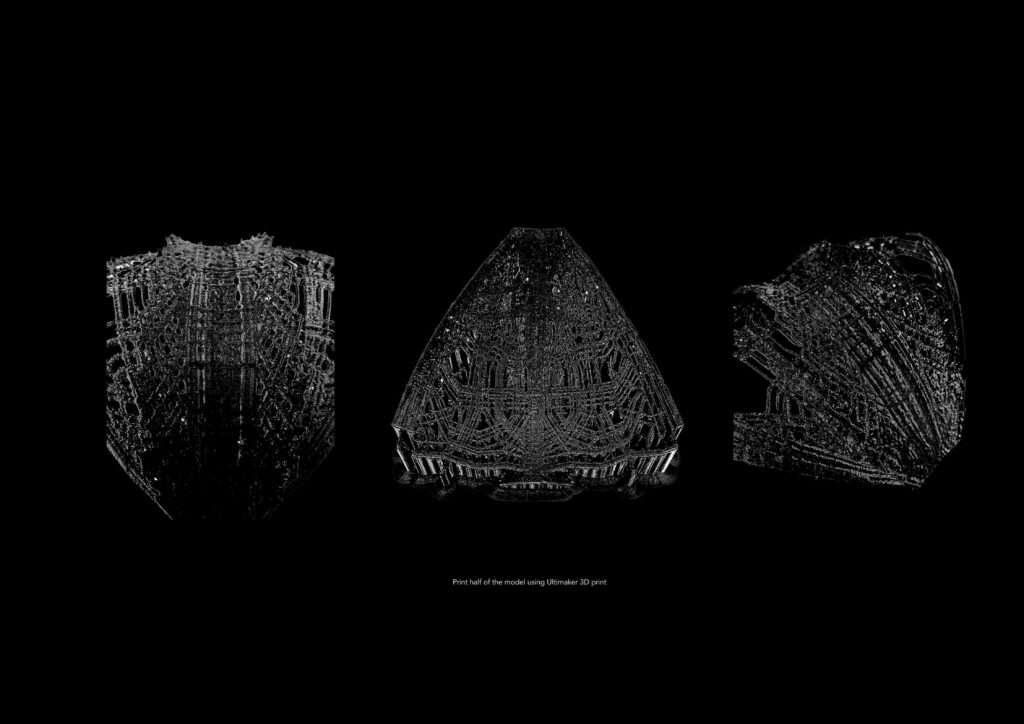
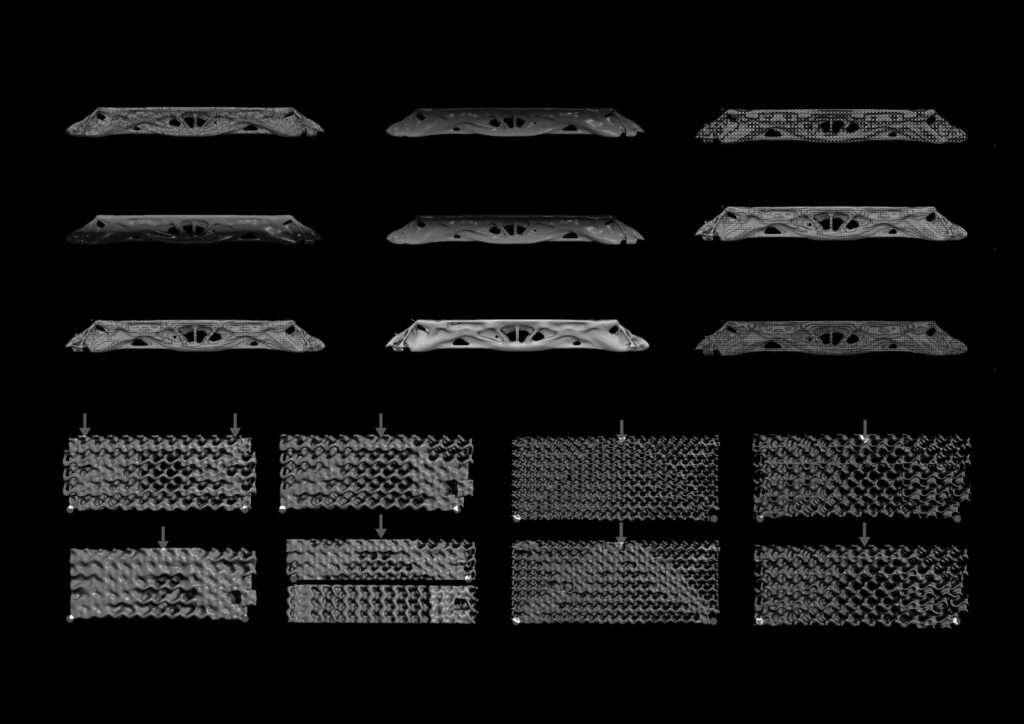
Geometry explorations
A series of geometric experiments was conducted to establish the project’s design methodology. The study drew inspiration from arthropods’ exoskeletons’ morphological and structural principles, which optimize strength while minimizing material use. By analyzing their load distribution and geometry, a procedural computational workflow was developed to simulate and apply these characteristics in architectural structures.
The result is a lightweight exoskeletal structure that integrates advancements in additive manufacturing with bio-inspired computational design. The internal geometry adapts based on a homeostatic load-responsive process, varying density, and orientation according to local strain levels. A custom algorithmic workflow was developed to replicate this adaptive behavior, optimizing structures locally regarding topology, orientation, and section to maximize material efficiency.
This research contributes to material efficiency and structural performance while introducing a computational approach to architectural construction. Through bio-inspired geometry, algorithmic workflows, and advanced simulation techniques, the project investigates adaptive and optimized structural systems in architecture.
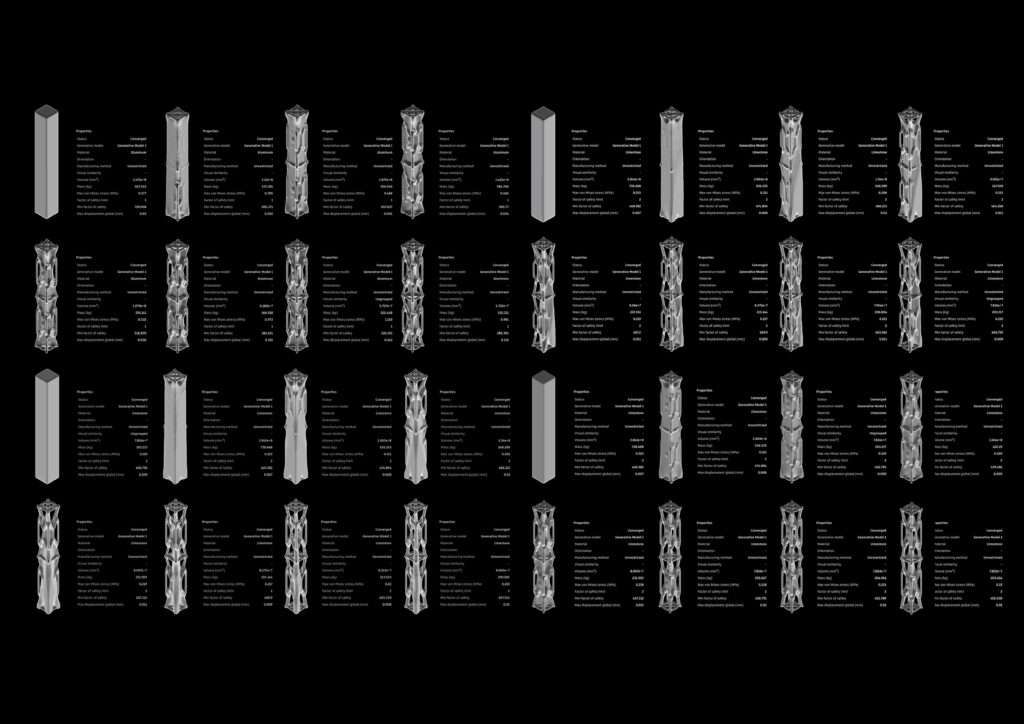
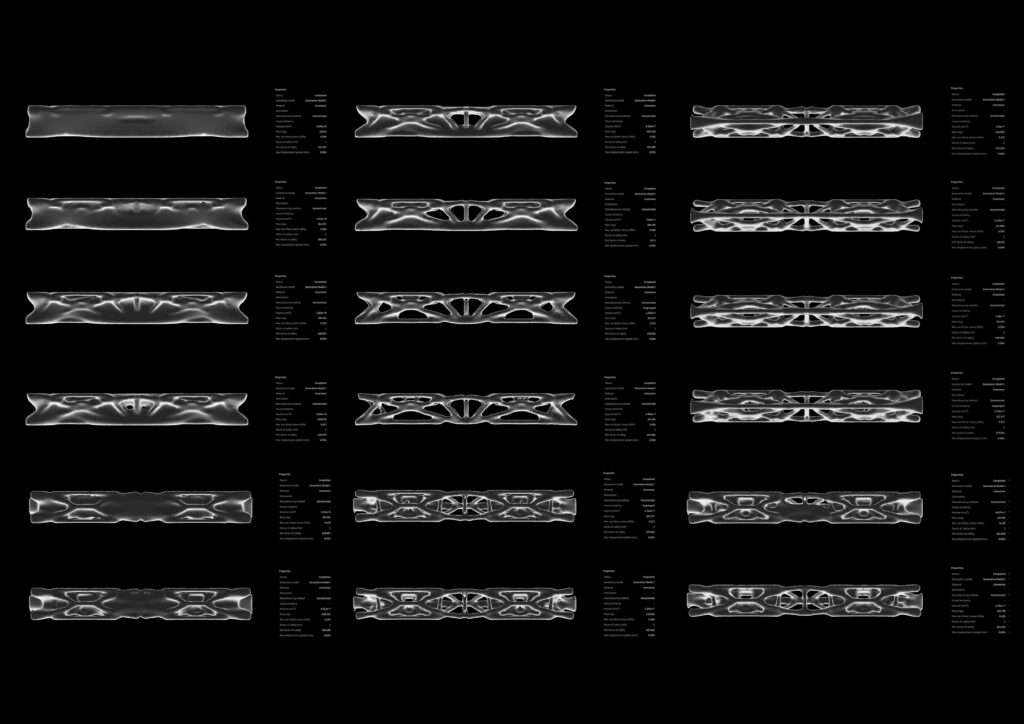
Applications beyond architecture
The methodology explored in this study has potential applications beyond architecture, particularly in automotive design. Applying architectural principles to engine chambers and car frame structures aims to integrate form and function, optimizing performance and material efficiency across different design disciplines.









